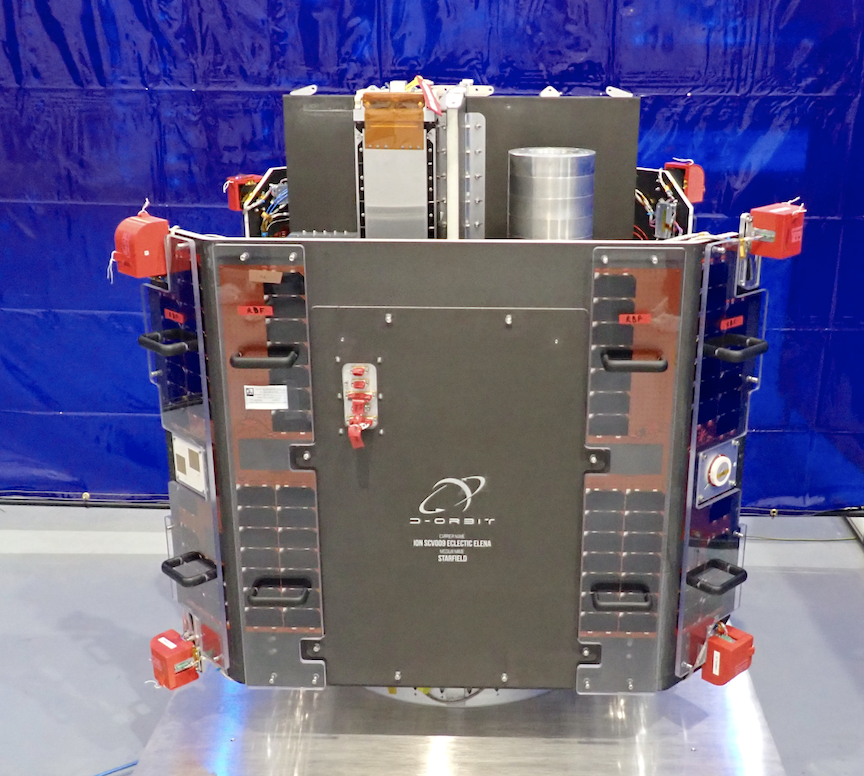
ION is a satellite platform with a configurable payload bay that can be equipped with a combination of proprietary or third-party launch dispensers, CubeSat-sized payloads, microsatellites, and instruments like lenses and antennas to be tested in orbit.
Space logistics and orbital transportation company D-Orbit launched Starfield, the eighth commercial mission of their proprietary orbital transfer vehicle (OTV) ION Satellite Carrier (ION), and the first one in a mid-inclination orbit.
The OTV lifted off today, January 31st, 2023, at 8:15 a.m. PT (16:15 UTC) aboard a Falcon 9 rocket from the Space Launch Complex 4 East (SLC-4E) at Vandenberg Space Force Base in California, and was successfully deployed 57 minutes later into an approximately 340km altitude and 70-degree inclination orbit.
ION is a versatile and cost-effective OTV designed to precisely deploy satellites and perform orbital demonstrations of third-party payloads hosted onboard. After the first commercial mission in September 2020, D-Orbit has completed seven more missions, including one featuring two IONs.

“A new year has just started, and we have already launched two new missions and three IONs”, said Renato Panesi, PhD, D-Orbit’s co-founder and Chief Commercial Officer. “I’m looking forward to facing the challenges and celebrating the victories that 2023 will bring as we steadily move along our roadmap, and I am proud to be part of the truly remarkable team that is making the evolution of space logistics possible”.
During the mission, ION SCV009, dubbed “Eclectic Elena”, will host onboard four third-party payloads:
- ADEO-N3, an autonomous braking sail developed by Munich-based space company HPS designed to help deorbit satellites in LEO (up to 900 km) faster than with natural orbital decay. ADEO can be used on satellites with flight altitudes below 900 kilometers. D-Orbit has already performed a successful deployment of ADEO’s smallest variant in December 2022. The smallest version of the ADEO family, ADEO-N3 weighs less than one kilogram, with dimensions of only 10 x 10 x 10 centimeters (1U) and a sail area of 5.0 square meters.
- NEA® Payload Release Ring (PRR) by Ensign-Bickford Aerospace & Defense Company (EBAD) for the deployment of payloads/spacecraft from a launch vehicle or Orbital Transfer Vehicle (OTV). Available in 8”, 15”, and 24” diameters, the NEA® Payload Release Ring consists of four NEA® release mechanisms, two ring halves, and separation springs with corresponding holders. The ring will be used to release a spacecraft simulator from ION.
- Bunny, an onboard computer developed in-house by the students of the Spacecraft Team of the Swiss Institute École Polytechnique Fédérale de Lausanne (EPFL). This experiment is part of the CHESS project, which aims at launching a constellation of two CubeSats to analyze the Earth’s atmosphere chemical composition and its evolution over time and test a proof-of-concept for low-cost probes to investigate extraterrestrial atmospheres in future planetary missions.
- SD-1, a memorial payload by StardustMe consisting of a batch of aluminum machined capsules, each carrying a gram of human cremated ashes, contained in an additive-manufactured frame and enclosure. The assembly, permanently fixed to the main core of ION, will eventually re-enter the atmosphere with the host vehicle during decommissioning, providing an ultimate form of space burial.
D-Orbit’s mission control team is now conducting the launch and early orbit phase (LEOP) in preparation for the operational phase.
Starfield is ION’s second mission in 2023. D-Orbit launched its first ION in September 2020 aboard an Arianespace VEGA launcher, then six further missions aboard SpaceX Transporter missions. With this launch, the Company will have transported to space more than 90 payloads collectively.
